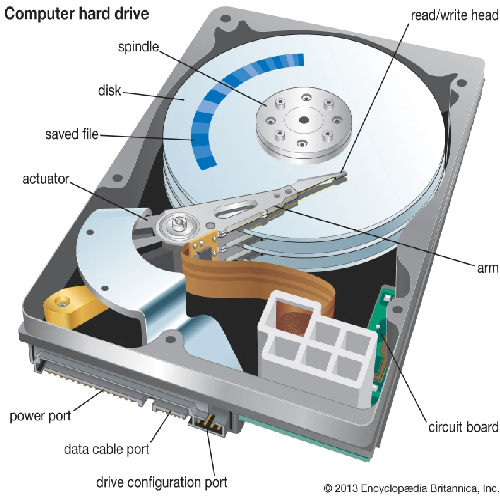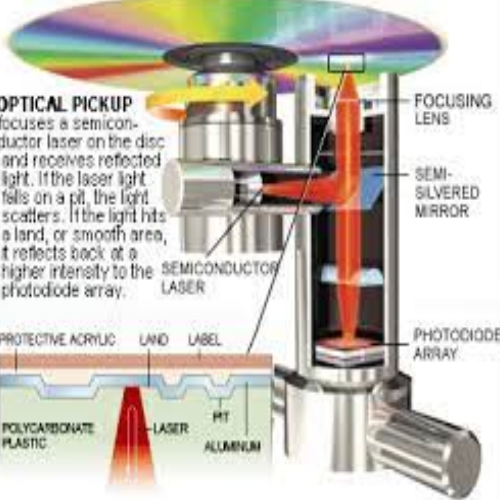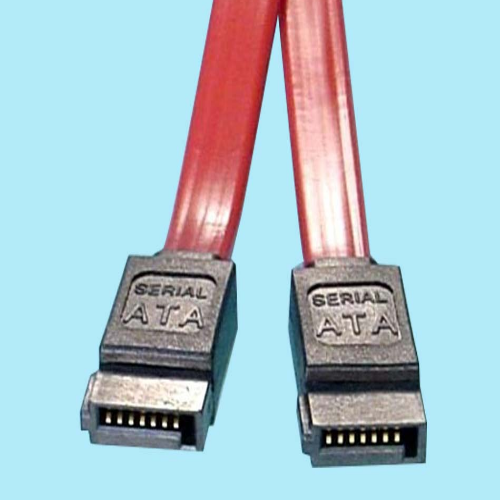WHAT IS STORAGE?
Storage is usually what you think of when you hear of "saving" to a computer. It's permanent, nonvolatile, rewritable, and versetile. They come in the form of hard drives, solid state drives, optical drives, flash drives, floppy drives, and many, many more.
HARD DISK DRIVE
"...a series of thin platters that store information using magnetic recordings…"
- This is a drive that contains a stack of thin platters.
- Said platters contain bumps and grooves modified by magnets.
- The drive is able to read the 1s and 0s by spinning the disk really fast and measuring the air pattern movements created.
- These drives are one of the last computer parts to have moving mechanical parts, and is in turn rather fragile compared to other parts and will likely be phased out soon.
SOLID STATE DRIVE
"...a solid state flash hard drive with no moving parts."
- This is a smaller, lighter, faster, and more durable alternative to the hard disk drive.
- Data is stored through FLASH MEMORY, a common type of storage that uses millions of FLASH CELLS (consisting of a large transistor with a control gate) that hold charges to store data.
- Other examples of flash memory are microSD cards, SD cards, Flash Cards, USB drives, EMMS storage, MMS storage, and much more.
OPTICAL DRIVE
"These drives allow you to use media storage devices like compact discs or DVDs with your computer."
- Similar to hard disk drives, but the disks are interchangeable.
- Info is written and read through lasers etchning into and reflecting from the disk.
- Slowly phasing out as well due to mechanical parts in the drive.
SATA CABLE
"An industry-standard bus interface for connecting a computer's host bus adapter to storage devices"
- Seriously it is just the cable that connects the drives to the motherboard. It is NOT that hard.






